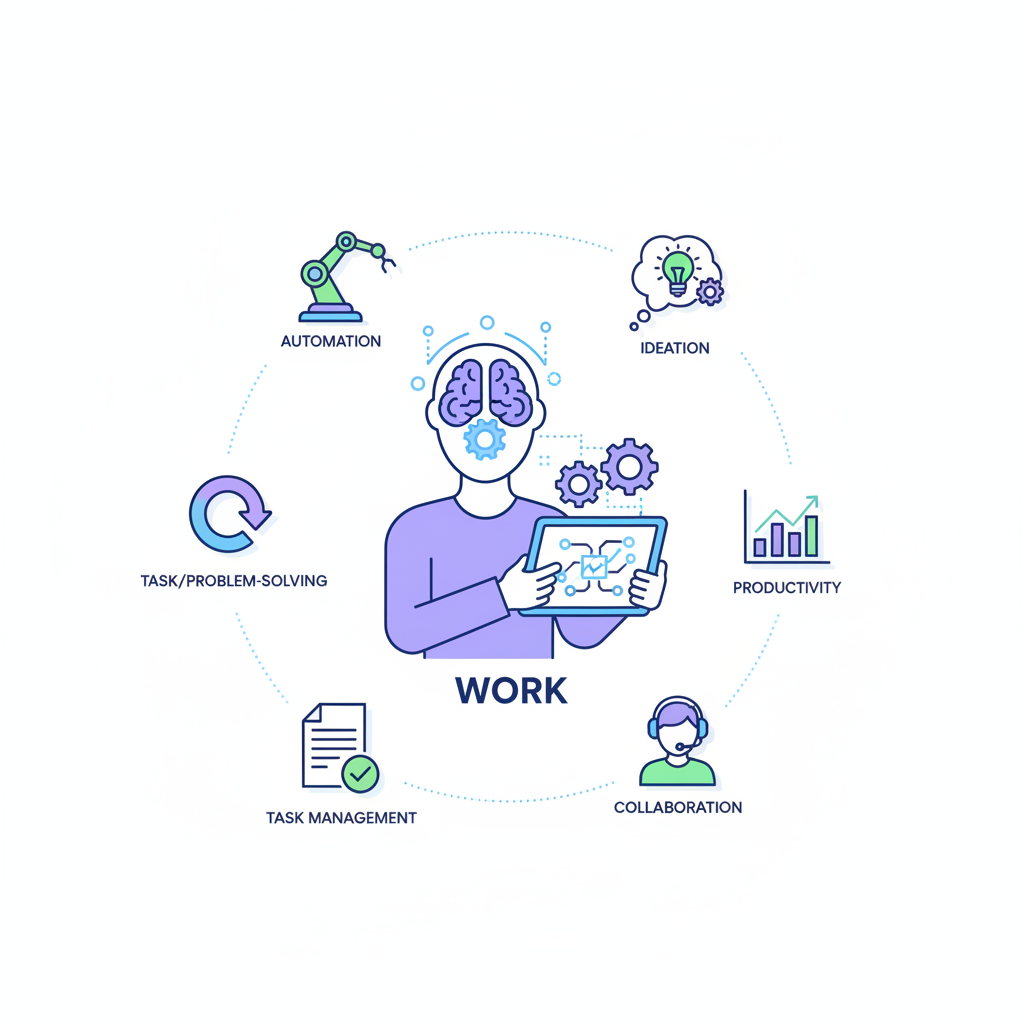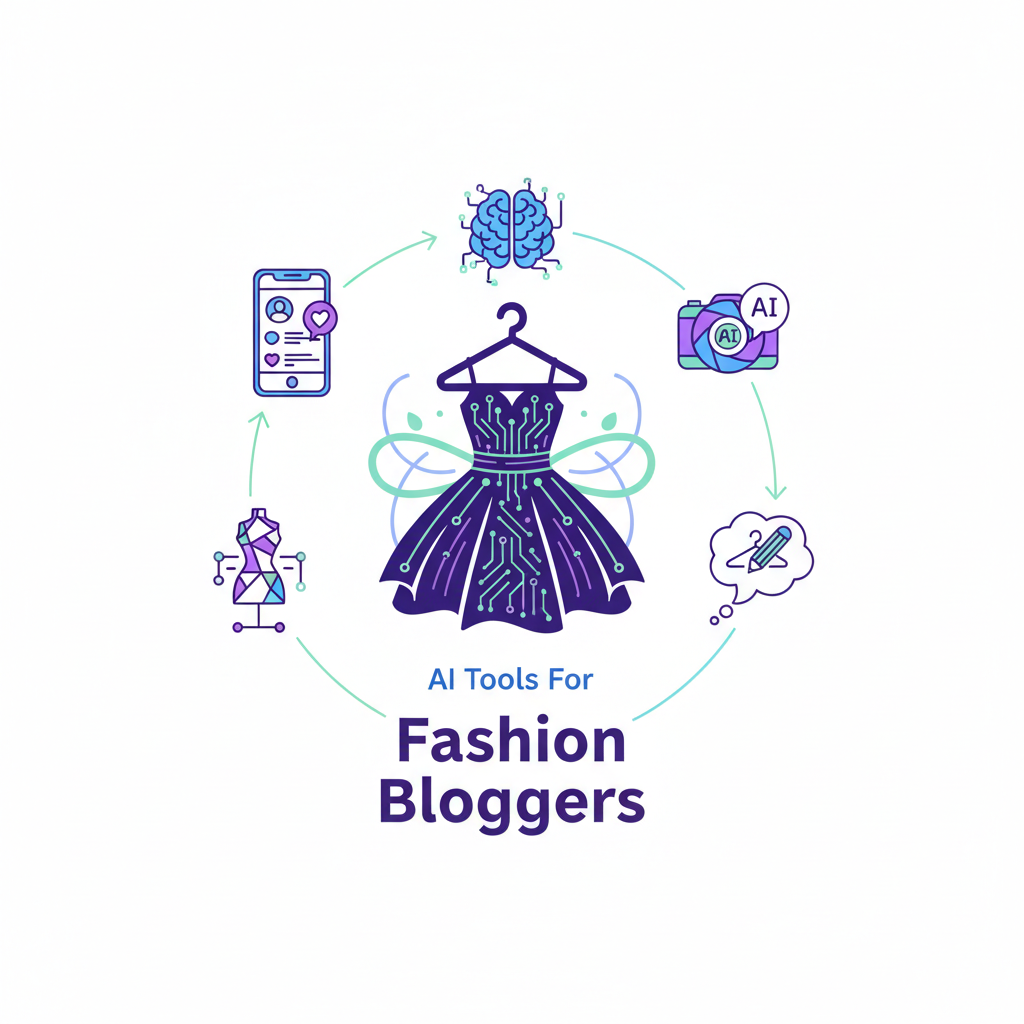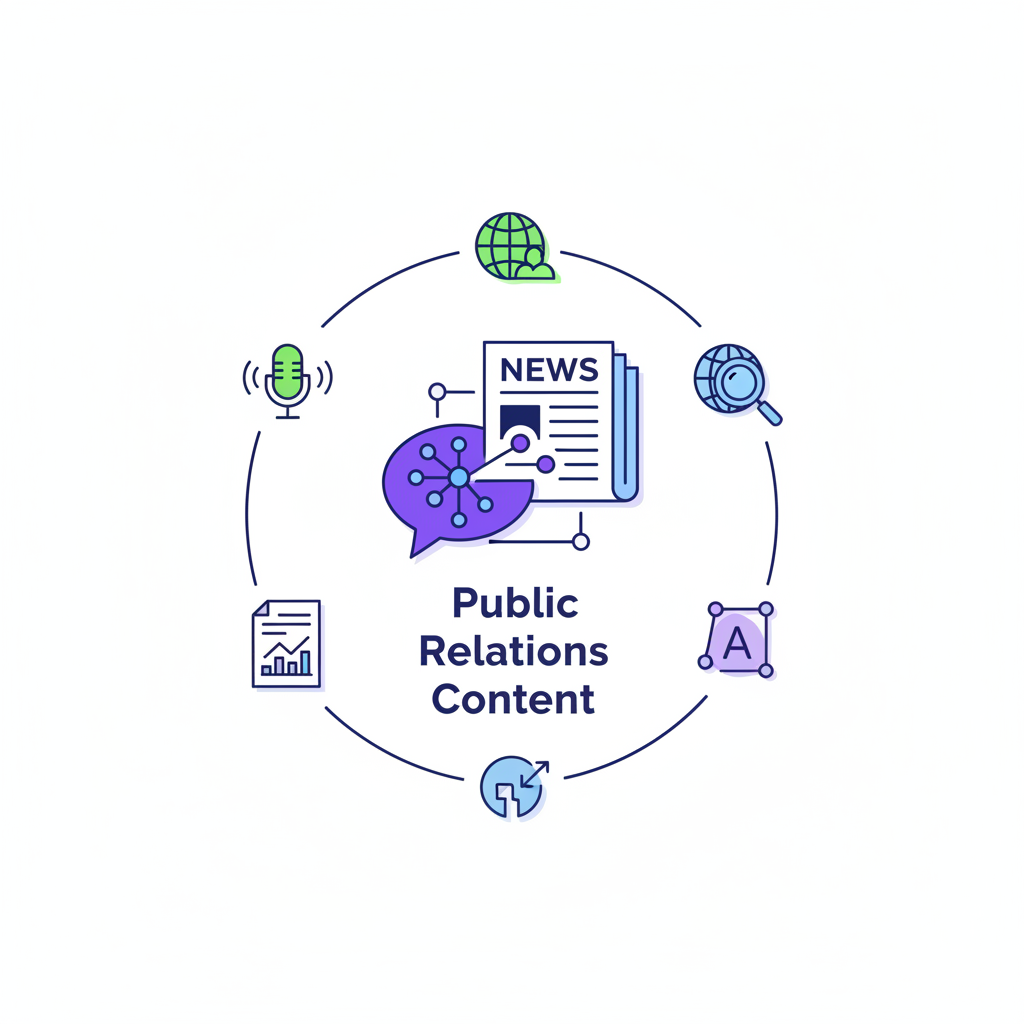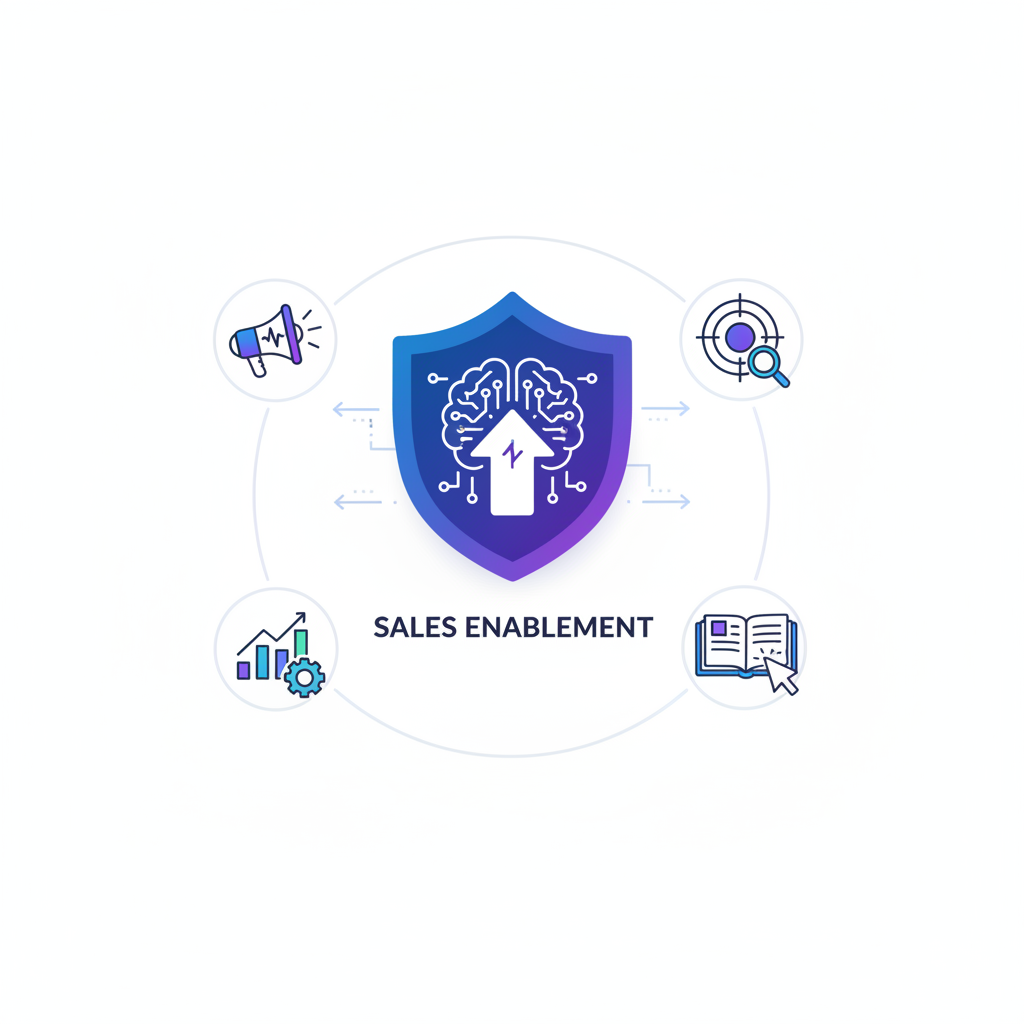The Future of Work: How AI Tools Are Changing Everyday Jobs
Discover how the future of work is being reshaped by AI tools. Learn how to build an advanced SEO content strategy focused on E-E-A-T, intent mapping, and technical optimization to drive measurable growth in everyday jobs like marketing and content creation.

The Future of Work: How AI Tools Are Changing Everyday Jobs
The professional landscape is undergoing a seismic shift, a transformation driven not by economic cycles or new management theories, but by the silent, pervasive integration of artificial intelligence into our daily tasks. This isn't a distant, futuristic concept; it's happening now, reshaping roles from marketing to software development. For content creators, SEO specialists, and digital marketers, the future of work is intrinsically linked to mastering a sophisticated, data-driven content strategy that leverages the power of AI. In this rapidly evolving digital ecosystem, content remains the cornerstone of connection and commerce, yet many businesses find themselves adrift, struggling to translate their content efforts into tangible, measurable growth. The disconnect often lies in the absence of a cohesive strategy—one that aligns content creation with business objectives and search engine mechanics.
The solution is no longer just about writing well or posting frequently. It's about building a sophisticated, AI-augmented SEO content strategy that acts as the essential catalyst for success. This approach transforms content from a simple marketing tactic into a powerful, predictable engine for growth, ensuring that every piece of content serves a specific purpose, reaches the right audience, and drives meaningful action. This is the new reality of work for digital professionals: a symbiosis between human creativity and machine intelligence, where AI tools are not a threat, but an indispensable partner in achieving unprecedented results.
Foundational Elements of a Robust SEO Content Strategy
A successful SEO content strategy is built not on guesswork, but on a deep, empathetic understanding of the people you aim to serve and the business goals you need to achieve. This foundational work ensures that your content is not only discoverable by search engines but also deeply resonant with your audience.
First and foremost is the process of defining your target audience and crafting detailed buyer personas. This goes far beyond basic demographics to include psychographics—understanding your audience's values, attitudes, interests, and pain points. Building these comprehensive personas, perhaps with the help of AI-powered survey analysis tools or social listening platforms, allows you to create content that speaks directly to their needs.
With a clear picture of your audience, the next step is to understand their complete customer journey. Content must be mapped to each stage—Awareness, Consideration, Decision, and Advocacy—ensuring that a prospect receives educational content early on and detailed comparisons or case studies when they are ready to choose a solution.
Finally, every content initiative must be anchored to clear, measurable SEO and business objectives. Utilize the **SMART** (Specific, Measurable, Achievable, Relevant, Time-bound) framework. For example, setting a goal to “Increase organic blog traffic from non-branded keywords by 25% in the next quarter” provides clear direction and a benchmark for success.
In-depth Keyword Research and Intent Mapping for Strategic Advantage
The job of an SEO specialist is fundamentally changing, moving beyond superficial keywords to embrace a nuanced, intent-driven approach. Understanding the 'why' behind a search query is now more important than the query itself.
Modern keyword research involves discovering not just high-volume terms, but also:
- Long-Tail Keywords: More specific phrases (e.g., “how to choose the best project management software for a small remote team”) that indicate a user further down the buying funnel.
- Semantic Keywords: Conceptually related terms that help search engines understand the broader context of your topic.
- Question-Based Queries: Directly address user problems, often leading to featured snippets.
The most critical evolution is mastery of search intent, which can be categorized into four types: **Informational**, **Navigational**, **Commercial Investigation**, and **Transactional**. Aligning your content structure (e.g., a blog post vs. a product page) with the user's intent is non-negotiable for achieving high rankings and low bounce rates.
Professionals now rely on sophisticated platforms incorporating AI to execute this research:
| Tool/Platform | Primary Use Case | Key Features for Advanced Research |
|---|---|---|
| Ahrefs | Comprehensive SEO analysis, backlink tracking | Keyword Explorer 3.0, Content Gap analysis, SERP overview, Questions filter |
| SEMrush | All-in-one marketing toolkit, competitor analysis | Keyword Magic Tool, Topic Research, Intent analysis, Keyword Gap analysis |
| Google Keyword Planner | Foundational keyword research, PPC campaign planning | Discover new keywords, Get search volume and forecasts, Grouping ideas |
| AnswerThePublic | Visualizing question-based search queries | Generates questions, prepositions, and comparisons related to a seed keyword |
Crafting High-Quality, Engaging, and SEO-Optimized Content
The standard for quality content has been significantly elevated, especially with AI capable of generating basic text. Modern content must adhere to Google's definitive standard: **E-E-A-T** (Experience, Expertise, Authoritativeness, and Trustworthiness). This requires providing first-hand knowledge, showcasing deep subject matter mastery, building a strong reputation, and ensuring transparency.
Content structure is equally vital for user experience and SEO. Effective structuring involves clear headings (H1, H2, H3), concise paragraphs, bulleted lists, and incorporating visual elements. Advanced on-page SEO requires meticulous attention to detail:
| On-Page SEO Element | Best Practice | How AI Can Assist |
|---|---|---|
| Title Tag | Include the primary keyword near the beginning; keep it under 60 characters. | Generate multiple compelling, character-limited title options. |
| Meta Description | Write a compelling summary (around 155 characters) that encourages clicks. | Draft unique, engaging meta descriptions based on the content's summary. |
| Internal Linking | Link to other relevant pages on your site to distribute authority and help users navigate. | Suggest relevant internal linking opportunities based on content analysis. |
| Image Alt Text | Use descriptive alt text for all images to improve accessibility and image SEO. | Generate descriptive alt text for images using image recognition technology. |
Tools like Grammarly assist in maintaining clarity and professionalism throughout this process.
Technical SEO for Content Optimization: Ensuring Discoverability and Performance
Even the best content will fail if your website infrastructure is unsound. Technical SEO ensures search engines can efficiently find, crawl, and understand your content.
- Site Architecture: A logical, hierarchical site structure, reflected in navigation and URLs, helps search engines and users navigate the site. Submitting an XML sitemap via Google Search Console (GSC) is a crucial step.
- Page Speed: Page load speed is a critical ranking factor and essential for user experience. Slow pages lead to high bounce rates. Optimization involves compressing images, minifying code, and using a Content Delivery Network (CDN).
- Mobile-First Indexing: Since most traffic is mobile, designing and optimizing content primarily for mobile users is mandatory. This requires responsive design that adapts seamlessly to all screen sizes.
Strategic Content Promotion and Distribution for Amplified Reach
A successful strategy requires a proactive, multi-channel approach. The "create and pray" method is obsolete.
- Multi-Channel Distribution: Share content across relevant platforms (LinkedIn, Twitter, etc.), tailoring the message for each. AI-powered scheduling tools help optimize posting times.
- Repurposing: Transform a single piece of content (e.g., a blog post) into multiple formats (infographic, video short, podcast episode) using AI tools to extend its reach and longevity.
- Strategic Partnerships: Collaborate with non-competing influencers and businesses for cross-promotion, borrowing trust and tapping into new, relevant audiences.
Measuring Performance and Iterative Optimization for Continuous Growth
An advanced strategy requires constant monitoring and data-driven refinement. Success is measured by KPIs that align with business objectives:
- Search Performance: Organic Traffic, Keyword Rankings, and CTR.
- On-Page Engagement: Average Time on Page, Bounce Rate, and Scroll Depth.
- Conversion: Leads Generated and Content-Assisted Revenue.
Tools like Google Analytics 4 (GA4) and Google Search Console are indispensable for tracking these metrics. Sophisticated businesses use advanced attribution modeling to understand the full journey a customer takes, ensuring content at every funnel stage gets the credit it deserves.
Addressing Advanced Content Gaps: E-E-A-T and AI Integration
The most significant shift for content professionals is the ethical and effective integration of generative AI. Tools like ChatGPT, Claude, and Jasper are best used as accelerators for **ideation** and **drafting first outlines**, not as replacements for human expertise and verification. The future role of the content professional is to apply their unique **Experience and Expertise** (the E-E-A-T core) to refine AI output, ensuring the content is accurate, valuable, and genuinely trustworthy.
The industry is also moving toward **multimodal content** (video, visual search, AR) and adapting to changes like Google's **Search Generative Experience (SGE)**, requiring content to be comprehensive enough to satisfy a user's entire query without needing a click.
Conclusion: Your Blueprint for Unprecedented Growth
The future of work for digital professionals is not about being replaced by AI, but being **empowered by it**. By integrating the advanced strategies of intent-focused keyword research, E-E-A-T-driven content creation, and meticulous performance measurement, you can transform your content from a cost center into your most powerful growth engine. Embrace the tools, but never lose sight of the human at the other end of the screen. Implement these strategies today, and you won't just be keeping up with the future of work—you'll be defining it.
Featured Tools

10Web is an AI-powered WordPress platform that offers automated website building, hosting, and optimization with AI assistance for content and image generation.

A global creative platform connecting businesses with freelance designers for custom graphic design projects.

Acquire.io is a customer engagement platform offering live chat, AI chatbots, co-browsing, and video chat to enhance customer support and sales.

A customer experience automation platform combining email marketing, marketing automation, and CRM with AI-powered personalization.

An AI-powered customer service automation platform that delivers personalized, instant support across various channels.
Top AI Categories
Related Articles

Top 10 AI Tools for Fashion Bloggers
Discover insights about AI tools and technology.

Top 10 AI Tools for Public Relations Content
Discover insights about AI tools and technology.

Top 10 AI Tools for Sales Enablement
Discover insights about AI tools and technology.